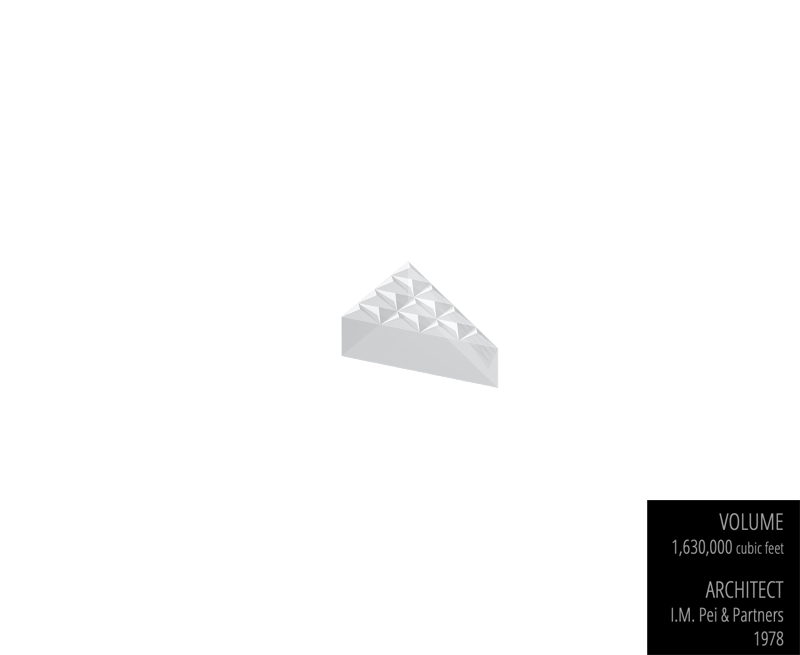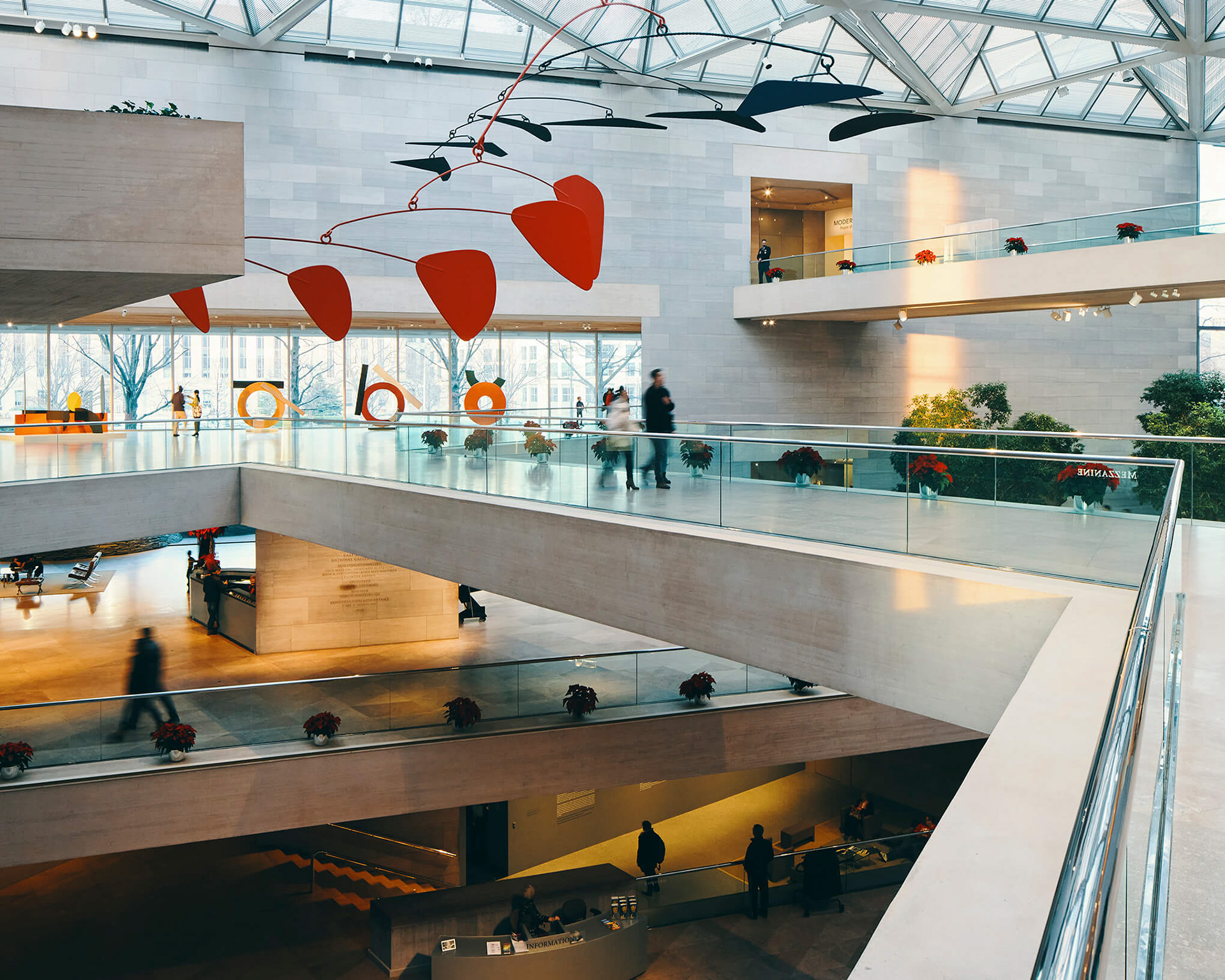Hey there, art enthusiasts and history buffs! If you're diving into the world of iconic landmarks that blend art and architecture seamlessly, the National Gallery of Art East Building is a treasure you don’t want to miss. This architectural marvel in Washington D.C. isn’t just a building—it’s a living testament to creativity, innovation, and cultural significance. Whether you’re into modern art, avant-garde design, or just plain cool structures, the East Building has got something for everyone. So, buckle up because we’re about to take a deep dive into its fascinating history, jaw-dropping architecture, and the incredible legacy it leaves behind.
Now, let me paint you a picture. Imagine stepping into a space where every corner tells a story, every line speaks volumes, and every detail is crafted with purpose. That’s exactly what the East Building offers. Designed by the legendary architect I.M. Pei, this place isn’t just a museum—it’s an experience. From its sharp angles to its expansive galleries, the East Building stands as a beacon of modern design in the heart of the nation’s capital.
But why should you care? Well, this isn’t just another tourist spot. The National Gallery of Art East Building is a cornerstone of American culture, housing some of the most groundbreaking works of modern and contemporary art. It’s a place where history meets the future, where tradition clashes with innovation, and where you can lose yourself in the sheer brilliance of human creativity. So, let’s explore what makes this place so special, shall we?
Here's a quick roadmap of what we'll cover:
- The Architecture: A Masterpiece of Modern Design
- Art Collections: A Feast for the Eyes
- The History: From Vision to Reality
- Design Philosophy: I.M. Pei’s Vision
- Contemporary Art: Pushing Boundaries
- Visitor Experience: What to Expect
- Cultural Impact: A Legacy of Inspiration
- Fun Facts: Hidden Gems You Didn’t Know
- Future Plans: What’s Next for the East Building?
- Conclusion: Why the East Building Matters
The Architecture: A Masterpiece of Modern Design
Alright, let’s kick things off with the star of the show—the architecture. The East Building is more than just a building; it’s a work of art in itself. Designed by the legendary architect I.M. Pei, this structure is a perfect blend of geometric precision and artistic flair. The building’s distinctive triangular shape is a result of the irregular plot of land it occupies, and trust me, it works wonders.
Pei’s design philosophy revolved around creating spaces that were both functional and visually striking. The East Building achieves this with flying colors. Its sharp angles and clean lines create a sense of movement and dynamism, making it a standout among the more traditional structures in Washington D.C. The use of marble and glass adds a touch of elegance, while the open atriums and skylights bring in natural light, creating an inviting and uplifting atmosphere.
Key Features of the Architecture
Let’s break down some of the standout features that make the East Building so unique:
- Triangular Geometry: The building’s triangular shape is not just a design choice; it’s a solution to the challenging site constraints. This innovative approach turned a potential problem into a defining characteristic.
- Skylights and Atriums: The use of skylights and open atriums ensures that natural light floods the interior spaces, creating a bright and airy environment that enhances the viewing experience.
- Materials: The choice of materials, particularly the pink Tennessee marble, gives the building a timeless and luxurious feel. It’s a nod to the classical while embracing the modern.
Art Collections: A Feast for the Eyes
Of course, no visit to the East Building is complete without exploring its incredible art collections. This place is a haven for modern and contemporary art lovers, housing works from some of the most renowned artists in history. From Jackson Pollock’s abstract expressions to Andy Warhol’s pop art masterpieces, the East Building offers a diverse range of styles and movements.
One of the highlights is the collection of modern art, which includes pieces that challenge traditional notions of art and push the boundaries of creativity. The gallery spaces are thoughtfully designed to enhance the viewing experience, with each room tailored to the specific needs of the artworks it houses.
Must-See Exhibits
Here are a few exhibits you absolutely cannot miss:
- Jackson Pollock’s “Number 1, 1950 (Lavender Mist):” This iconic piece is a must-see for any fan of abstract expressionism.
- Andy Warhol’s “Campbell’s Soup Cans:” A quintessential example of pop art, this exhibit is a nod to consumer culture and mass production.
- Marc Chagall’s Stained Glass Windows: These vibrant and colorful windows add a spiritual dimension to the gallery spaces.
The History: From Vision to Reality
Now, let’s rewind a bit and talk about the history of the East Building. The idea for a second building to house modern and contemporary art at the National Gallery of Art was born in the 1960s. The original West Building, designed by John Russell Pope, was struggling to accommodate the growing collection of modern art. Enter I.M. Pei, who was commissioned to design the East Building in 1968.
Pei’s vision was to create a structure that would complement the existing West Building while offering a distinct identity. The construction process was not without its challenges, but the end result was nothing short of spectacular. The East Building officially opened its doors to the public in 1978, and it has been a beloved destination for art lovers ever since.
Key Milestones in the East Building’s History
- 1968: I.M. Pei is commissioned to design the East Building.
- 1974: Construction begins on the site.
- 1978: The East Building opens to the public.
Design Philosophy: I.M. Pei’s Vision
I.M. Pei’s design philosophy was rooted in the belief that architecture should enhance human experience. He approached each project with a keen eye for detail and a commitment to innovation. For the East Building, Pei aimed to create a space that was both functional and inspiring, a place where art and architecture could coexist harmoniously.
Pei’s use of geometric forms and natural materials reflects his desire to create a sense of balance and harmony. The building’s design is a testament to his belief that architecture should be both beautiful and practical. His vision has left a lasting impact on the world of architecture, and the East Building stands as one of his greatest achievements.
Contemporary Art: Pushing Boundaries
The East Building is not just about preserving the past; it’s also about embracing the future. The gallery regularly hosts exhibitions that showcase the latest trends in contemporary art, offering visitors a glimpse into the ever-evolving world of creativity. These exhibitions often challenge conventional ideas about art and encourage viewers to think outside the box.
One of the things that makes the East Building so exciting is its commitment to showcasing diverse voices and perspectives. Whether it’s through multimedia installations, performance art, or digital creations, the gallery is always exploring new ways to engage with its audience.
Upcoming Exhibitions
Here are a few upcoming exhibitions you might want to check out:
- “Digital Futures: Art in the Age of Technology”: This exhibit explores the intersection of art and technology, featuring works that utilize digital tools and platforms.
- “Diversity in Contemporary Art”: A celebration of diverse voices and perspectives in the art world, this exhibition highlights artists from underrepresented communities.
Visitor Experience: What to Expect
So, what can you expect when you visit the East Building? First and foremost, prepare to be amazed. The building itself is a work of art, and the galleries are filled with incredible pieces that will leave you in awe. The staff is friendly and knowledgeable, ready to answer any questions you might have.
There are also plenty of amenities to make your visit comfortable, including a café, gift shop, and restrooms. Guided tours are available if you want to learn more about the history and significance of the exhibits. And don’t forget to bring your camera—there are plenty of photo-worthy moments to capture!
Tips for Your Visit
- Plan Ahead: Check the gallery’s website for opening hours and any special exhibitions that might be taking place during your visit.
- Wear Comfortable Shoes: There’s a lot of walking involved, so make sure you’re dressed for comfort.
- Take Your Time: The East Building is a place to savor, not rush through. Give yourself plenty of time to explore and appreciate the exhibits.
Cultural Impact: A Legacy of Inspiration
The East Building’s cultural impact extends far beyond its physical presence. It has inspired countless artists, architects, and art lovers around the world. Its commitment to showcasing diverse voices and pushing the boundaries of art has made it a beacon of creativity and innovation.
Through its exhibitions and programs, the East Building continues to shape the cultural landscape of Washington D.C. and beyond. It’s a place where people come together to celebrate the power of art and the boundless potential of human creativity.
Why the East Building Matters
- Cultural Significance: The East Building is a symbol of American culture and creativity, representing the best of what the art world has to offer.
- Inspiration: It inspires artists and architects to think outside the box and push the boundaries of their craft.
- Community Engagement: Through its programs and exhibitions, the East Building fosters a sense of community and connection among its visitors.
Fun Facts: Hidden Gems You Didn’t Know
Here are a few fun facts about the East Building that might surprise you:
- It’s Home to Over 4,000 Works of Art: That’s a lot of masterpieces to explore!
- The Building Was Designed in Just 6 Months: I.M. Pei worked tirelessly to create a design that met the unique challenges of the site.
- It Was the First Modernist Building on the National Mall: A true trailblazer in the world of architecture.
Future Plans: What’s Next for the East Building?
Looking ahead, the East Building has exciting plans in store. Renovations and expansions are on the horizon, aimed at enhancing the visitor experience and accommodating the growing collection of modern and contemporary art. The gallery is also committed to expanding its digital presence, making its exhibits accessible to a global audience.
With its focus on innovation and diversity, the East Building is poised to continue its legacy of inspiring and engaging art lovers for generations to come.
Conclusion: Why the East Building Matters
And there you have it—a deep dive into the National Gallery of Art East Building. From its breathtaking architecture to its world-class art collections, this place truly is a gem. It’s a testament to the power of creativity, innovation, and collaboration, and it continues to inspire people from all walks of life.
So, whether you’re a seasoned art lover or just someone looking to explore something new, the East Building is a must-visit destination. And remember, art isn’t just something you look at—it’s something you feel. So, go ahead and let the East Building move you.
Before you go, don’t forget to leave a comment or share this article with your friends. And if you’re hungry for more, check out our other articles on art, architecture, and everything in between. Happy exploring!


